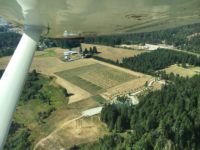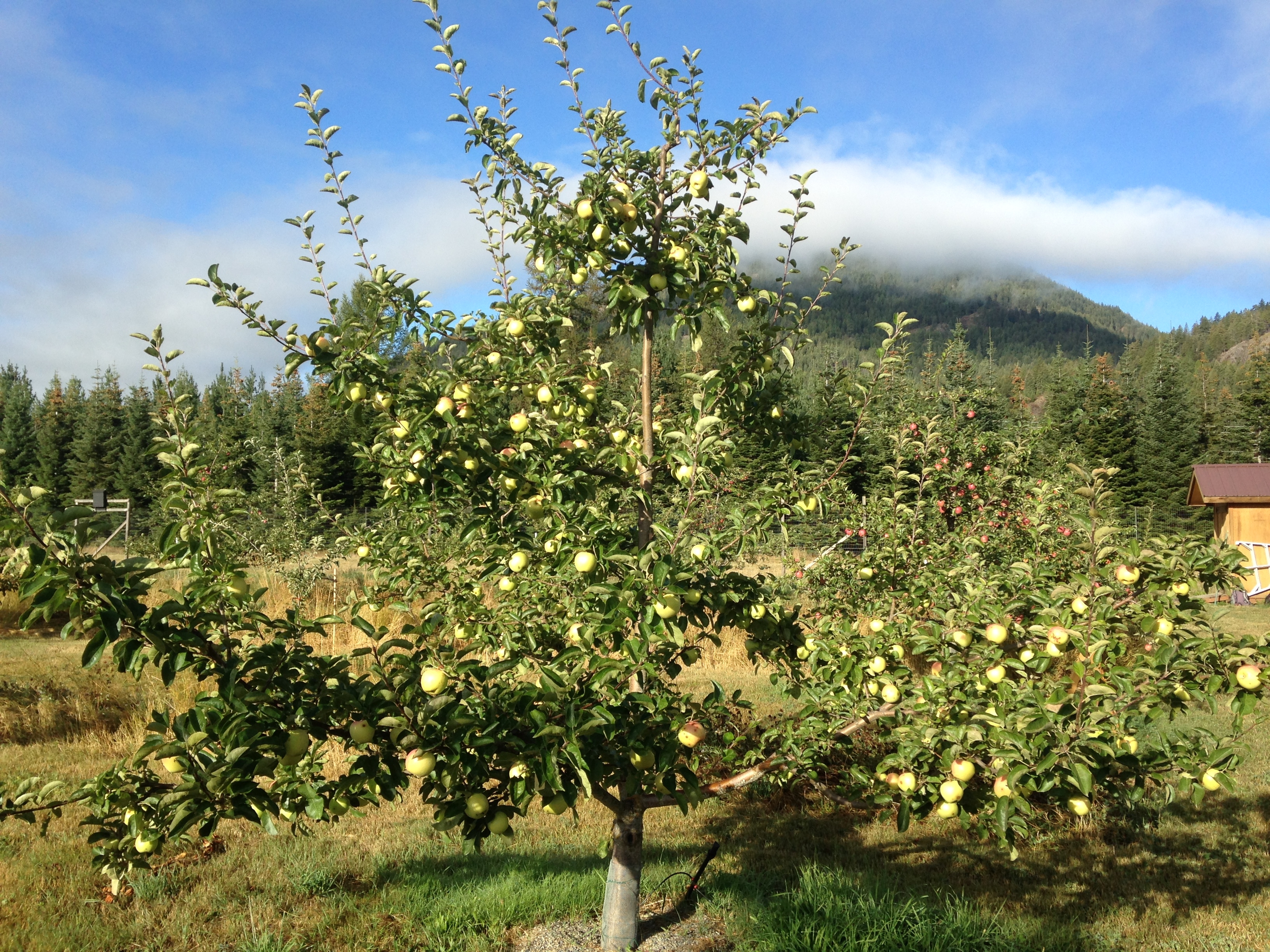

Jul 2, 2019‘Lost,’ antique apples of the West examined for cider potential
Old apples of the American West were a topic of discussion at a new university orchard this spring.
Growers recently gathered at the University of Idaho’s Sandpoint Organic Agriculture Center (SOAC) for a Heritage Orchard Conference in late May to hear about antique and even “lost” apple varieties that could possibly boost the flavor of future seasons’ cider.


Photo: Bill Loftus/ University of Idaho
“As the hard cider industry has made a resurgence in the last decade, cidermakers are finding that dessert apples, which is primarily what is available, do not make the best ciders,” said SOAC Superintendent and Orchard Operations Manager Kyle Nagy. “As people have become more discerning in their hard cider, they are looking for ciders with more complexity and flavor that cannot be found in the use of dessert apples in ciders.”
A new facility, SOAC was founded in August 2018 when the orchard and property were acquired by the University of Idaho, Nagy said. In addition to an orchard, the property has meeting facilities, dormitories for visiting faculty and students, a shop and cider house. The 640-tree, organic orchard specializes in heritage apples, with 68 apple varieties, seven pear varieties, and several cherry and plum trees. Some of those antique or heritage varieties include Calville Blanc, Arkansas Black, Kingston Black, Wickson, Golden Russet, Muscat de Bernay and Campfield.


“It definitely seems like cider apples tend to be a bit tougher to grow than many dessert varieties,” Nagy said. “Some, such as the Kingston Black, tend to be heavily biennial bearing and have fairly low production even in their good years.”
The Bitterroot Valley in western Montana, which includes the town of Hamilton, was formerly a large apple-producing area, Nagy said. So were some parts of southern Idaho.
“Perhaps the most valuable asset these regions had was their climate,” he said. “Low humidity helps control many fungal diseases that can cause real problems in apple growing regions with high humidity, such as the East Coast and Midwest.”
Even though neither state is a major apple producer, there was significant interest in its apples. Growers turned out for a tour and presentations. Speakers from the University of Wyoming and Montana State University spoke about efforts to save old and rare trees in those states.
Katrina Mendrey, orchard program manager with Montana State University’s Western Agricultural Research Center, helped organize the event and moderated a discussion among attendees of the event, identifying how the group could work together and pool resources.
Related story: Montana State University studies cider apple production
“The main topic everyone seemed interested in was apple identification and specifically the use of genotyping to see if the apples were lost or new cultivars that could be introduced for commercial production,” she said.
Her own orchard program often gets requests from growers.
“This year we sold 179 trees to eight local nurseries across the state as part of our heritage orchard program,” she said. “The cider industry is interested in finding a bittersweet apple that can grow well in Montana and is not susceptible to fire blight. This, of course, would likely be a seedling variety growing in some field somewhere. So far, we haven’t found such a tree but we are looking.”


David Benscoter also spoke about the “Lost apples of the Inland Empire.” A Washington State University alumnus and a retired law enforcement officer, his alma mater once described him as an “apple detective.”
“The apples we search for are apples that originated in Eastern states before the West was populated,” Benscoter said. “The apples were all popular, at least regionally, so frontier nurserymen stocked them in their nurseries. Here in eastern Washington and northern Idaho, homesteaders planted their orchards in the late 1800s and early 1900s. By the 1920s, many of these varieties were no longer sold by nurseries. However, many forgotten orchards still exist in ravines or fields in the region.”
Benscoter and his friends have been searching for “lost” apple varieties in eastern Washington for several years and have found about 13 since that time.
“I’ve gone as far west as Ellensburg and as far south as Walla Walla,” he said. Many of the old American cultivars were not prized for cider, he said – possibly because of the influence of the Temperance Movement in the late 1800s. A variety called “Smith’s cider” is an exception.
Benscoter once took a friend who was looking to establish a cider orchard to the Steptoe Butte State Park, where they tested both the old trees and saplings growing underneath them for cider suitability.
Homesteading farmers in that area often planted a wide variety of apple trees on land not suitable for wheat or other row crops.
“These trees are just like a time capsule of when they were planted,” Benscoter said. “Very rarely are the same apples planted side-by-side.”
Idaho growing
Heritage varieties are notorious for being hard to grow, and the orchard managed by Nagy in Sandpoint, Idaho, is organic, giving him fewer options for controlling disease and pests.
He said his main three challenges are apple scab, codling moth and rodents.
“Apple scab is a fungal disease that we prevent with micronized sulfur applications in the spring,” he said. “The low humidity helps keep this in check, but every spring is a little different.”
Mating disruption helps control codling moth, and Nagy is looking at using the granulosis virus in its pest control program. The virus infects and kills codling moth larvae.
“Rodents (voles and pocket gophers) can do a lot of damage in an orchard, especially an organic orchard in which we cannot use poison and baits,” he said. “We use cultural practices such as low ground cover and mulches, as well as some physical trapping. We also try to encourage natural predators by having raptor poles throughout the orchard to give the red tail hawks and owls a place to hunt from in the orchard.”
– Stephen Kloosterman, associate editor
A view of the University of Idaho’s Sandpoint Organic Agriculture Center. The university acquired the property in August 2018. Photos: Kyle Nagy and Bill Loftus/University of Idaho














